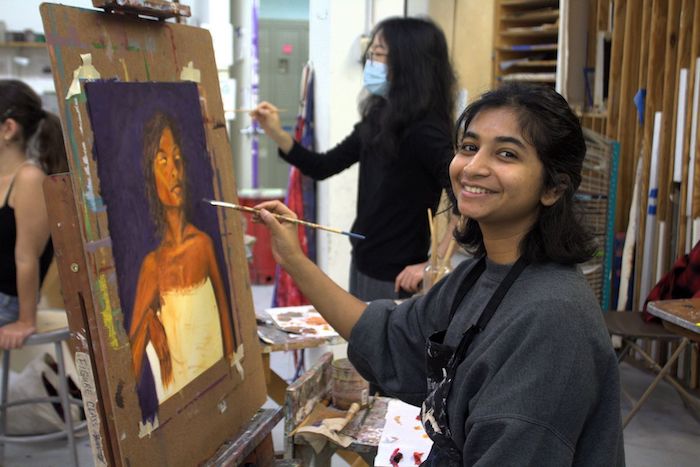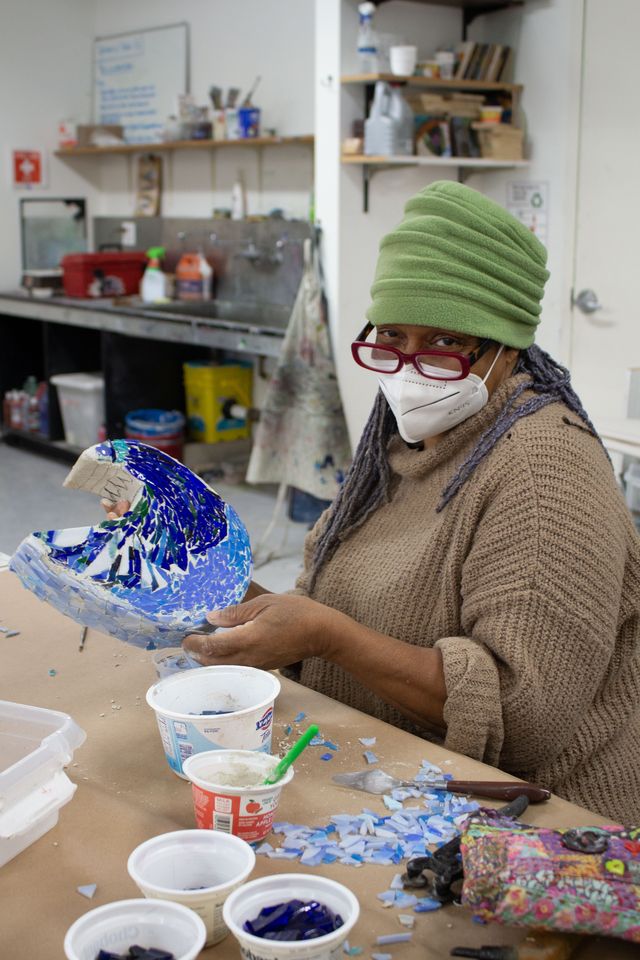Hyde Park Art Center Announces Art Education Program is Now 100% Pay-What-You-Can, The Nation's 1st


Via PR
(CHICAGO) April 23, 2024 – Hyde Park Art Center, the renowned non-profit hub for contemporary art located on Chicago’s vibrant South Side, announces that it has completed the transition to a contribution-based model for 100% of its art classes. The initiative, Open Arts, launched in spring 2022 with 70% of the courses on a contribute-what-you-can basis. The completion of this pioneering initiative makes the Art Center’s Oakman Clinton School + Studio the nation’s first fully contribute-what-you-can visual art school for all ages. The successful model, dedicated to ensuring more equitable access to artmaking, education, and community engagement, demonstrates the Art Center’s commitment to the South Side and the broader Chicago art ecosystem for the years to come.
View VIDEO of students, teachers, donors, and Art Center staff sharing first-person perspectives on the program’s impact.
As part of the 2016-2020 strategic planning process, the Art Center heard from constituents that the Art Center’s art-making facilities, education programs, and community of makers are a vital part of many people’s lives–and that at the same time, many were unable to participate because of the cost. Hence, the Art Center created a radical plan to ensure that no one is shut out due to their economic status. In 2018, the Art Center Board of Directors initiated the $16 million ART MAKES: COMMUNITY + CHANGE capital campaign, the largest in the Art Center’s history, to establish the contribute-what-you-can education model and to increase funding for general operations and artist investment. By 2022, the Board had raised $17 million, surpassing the ambitious original goal and enabling the implementation of the contribution-based model.
Two years after the initial launch, the Open Arts curriculum now includes all classes offered by the Oakman Clinton School + Studios at the Art Center, with more than 40 on-site courses each quarterly term, and additional workshops and virtual courses that provide more ways for the community to access artmaking. On average, the School + Studios offer more than 150 coursesper year and 120 teaching hours per week. Open Arts encompasses courses for all levels of participants, from skill-building courses for beginners such as painting and printmaking, to professional development programs for working artists including critique feedback and grant writing workshops, removing the financial barriers for artists of all economic, geographic, and cultural backgrounds.

The contribute-what-you-can tuition model is shown to foster a culture of giving, and its continuous success relies on the generosity of class-takers, funders, and supporters of all types on an ongoing basis. Patrons are invited to contribute what they can through financial donations, class participation, spreading the word via social media, or however else they can. To make a donation that builds a path for continued equitable access to arts education, visit www.hydeparkart.org/education/open-arts/.
Jill Potter, an Open Arts student, shares the liberty and interactions the initiative gives her: “Having the ability to decide what I can afford is liberating. I don’t have to choose between participating or not. And I can see the difference Open Arts is making at the Art Center. There are so many new faces and ‘first-timers’ in classes. I appreciate the multigenerational learning space where people exchange ideas and experiences.”
Randall Miller, a teaching artist at the Art Center for over 10 years, shares how the program ensures steady work and reliable enrollments: “Prior to Open Arts, I worked with a small handful of really dedicated students. Unfortunately, there weren't always enough of them to run a class, so we would either be scrambling to enroll a few more students, or we would have to cancel. That kind of unpredictability was frustrating for students and difficult for me as the teaching artist because I loved working with those students, and I needed steady work. Now my courses have waiting lists and the students I've worked with for years have been able to maintain their work and sense of community.”
Jen Tremblay Chambers, Co-Executive Director of the Art Center, shares the genesis, goals, and impact of the initiative: “Our community asked us for better ways to alleviate the financial stress and economic barriers that can come with signing up for a class. That was a call to action. We see first-hand every day the importance for people to be able to access their creativity and build deep relationships with peers and teachers. Many consider the school a second home, and we’re thrilled that tuition no longer gets in the way of their belonging.”
About Hyde Park Art Center
Hyde Park Art Center, at 5020 South Cornell Avenue on Chicago’s vibrant South Side, is a hub for contemporary arts in Chicago, serving as a gathering, production, and exhibition space for artists and the broader community to cultivate ideas, impact social change, and connect with new networks. Since its inception in 1939, Hyde Park Art Center has grown from a small collective of artists to establishing a strong legacy of risk-taking and experimentation, emerging as a unique Chicago arts institution with social impact. Today, the Art Center offers a diverse suite of programs for artists and art lovers of all backgrounds, ages, and stages in their careers including: contemporary art exhibitions in six galleries; open-access community-based school with 1,500 annual enrollments; weekly arts education to 1,000 elementary school students in public schools; weekly and summer teen programs for 100 teen artists; professional-advancement programs for artists; a local and international artist residency; and public programs that connects residents with Chicago art and artists. The Art Center functions as an amplifier for creative voices of today and tomorrow, providing the space to cultivate new work and connections. For more information, visit www.hydeparkart.org.






